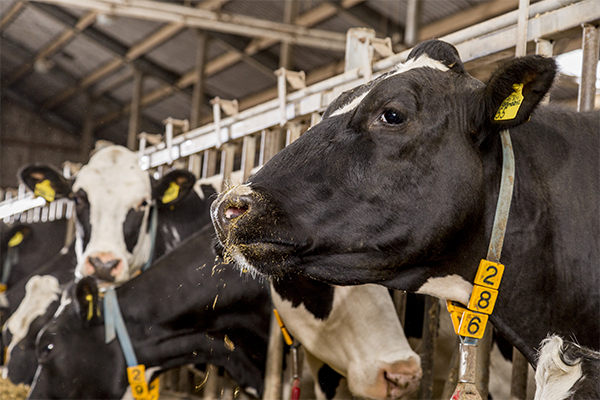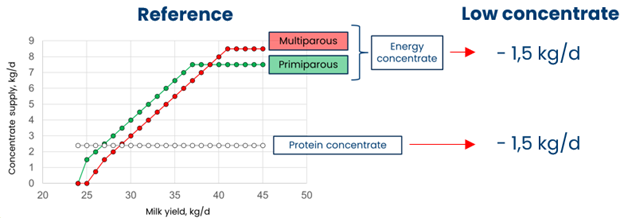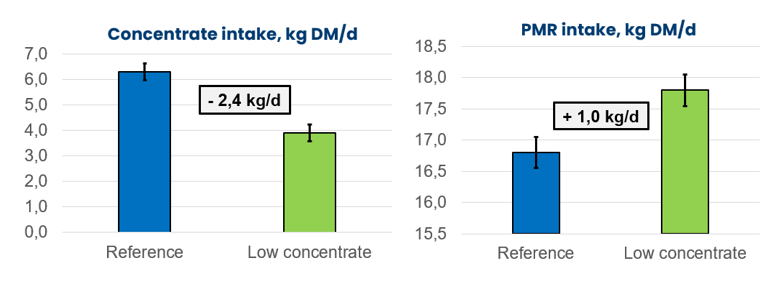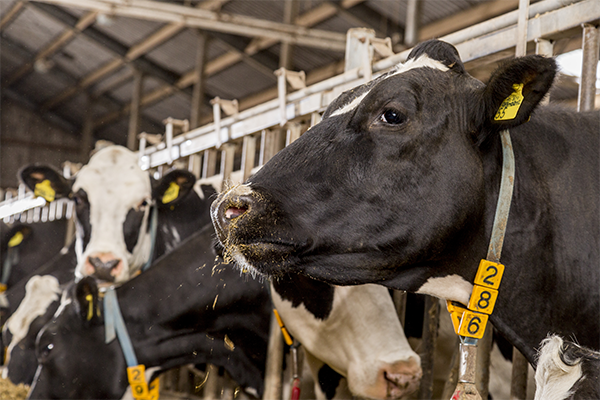Increasing nitrogen efficiency and impact on feed balance
- Ruminants
Efficient protein feeding means conversion of feed protein to milk protein in the most efficient way. Efficient conversion also means saving on manure disposal costs, whether calculated through the urea amount or nitrogen excretion through the BEX. In addition, protein is a costly component in the ration, so reducing protein while maintaining performance is associated with a higher feed balance.

Within the Precision Feeding research pillar of our Sustainable Farming approach, protein efficiency is a major theme. Recently, a number of studies have been conducted on Trouw Nutrition's cattle research farm to increase nitrogen efficiency, focusing on the effects on dairy cow performance and feed balance. These studies, as well as Trouw Nutrition's new vision for amino acids, were also presented at a sustainability event we hosted in the Netherlands late last year.
In a second study, lower crude protein levels in the ration were achieved by offering less concentrate feed. In this study, 60 dairy cows were given two different concentrate rations alongside a PMR ration for 8 weeks. Here, 1.5 kg/cow less was offered for both protein and energy pellets, as shown in Figure 1. With this adjustment in concentrate provision, crude protein content decreased from 15.5% to 14.4%.

Figure 1. Schematic representation of the 2 different concentrate feeding schemes
The lower concentrate intake was partially offset by a higher intake of the PMR (Figure 2).

Figure 2. Effect of reduced concentrate supply on concentrate and PMR intake and measured milk production (Daniel et al., unpublished)
As a result of the reduced dry matter intake, milk production showed a decrease of 1.6 kg. The effect of reduced crude protein on reduced N excretion through manure was 17% (table 1). The feed balance, calculated with costs during the trial, showed no difference, despite the significant difference in roughage and concentrate intake between the two treatments.
When updated to current roughage and concentrate costs, with PMR costs having increased slightly and concentrates having decreased in price, the treatment feed balance compared to the reference shows a very slight decrease of 0.08 €/cow/day.
|
|
Average milk price - lower CR costs |
Average milk price - higher CR costs |
||
|
|
Check |
Low CF |
Check |
Low CF |
|
Milk revenue (€/cow/day) |
15.4 |
14.6 |
15.0 |
14.2 |
|
Ration costs (€/cow/day) |
5.8 |
5.0 |
5.5 |
4.8 |
|
Feed balance (€/cow/day) |
9.61 |
9.61 |
9.48 |
9.40 |
|
Difference (€/cow/day) |
|
0.0 € |
|
- 0.08 € |
|
Reduction of N excretion through manure (% vs. control) |
|
17% |
|
17% |
Table 1. Effect reducing protein content in rations (via concentrate feed) on yield and reduction in N excretion through manure.
Lowering crude protein is a logical step to achieve higher nitrogen efficiency, but this requires customisation. However, it is certainly possible to maintain the same feed balance with lower crude protein levels, despite lower production.
